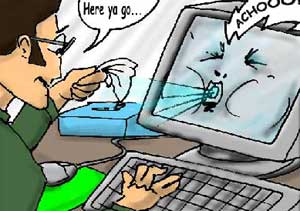No continent transports more spam than Asia, confirms security firm Sophos.
 |
|
Source: Kilianwicks |
Asia accounts for a staggering 42.8% of the spam tracked by Sophos’ global spam network, far surpassing North America’s second-place share of 25.6%.
Two years ago, North America was the leading source of spam, responsible for over half of the world’s total spam volume. Now, according to Sophos, the combined spam rates from both North America and South America do not match Asia’s figures.
Graham Cluley, a senior technology consultant at Sophos, notes that Europe is increasingly becoming a key player in the spam ecosystem, with spam rates approaching those of North America (25%). He expressed that he would not be surprised if Europe overtakes North America next month.
When looking at the country breakdown, the United States remains the top spam producer with 23.1%. China and Hong Kong tie for second place with 21.9%, while South Korea ranks third with 9.8%.
According to Sophos’ analysis, China has a vast number of computers running outdated versions of Windows, which significantly contribute to the high spam rate, as these systems are often vulnerable and easily exploited by spammers.
Conversely, South Korea presents an especially attractive target for spammers due to its advanced technology infrastructure. Furthermore, establishing a botnet in South Korea is akin to hitting the jackpot for attackers, given the substantial economic benefits. “South Korea has an excellent Internet infrastructure with ultra-fast connections, making it a goldmine in the eyes of spammers,” Cluley stated.
Another report from ZDNet indicates that despite significant advancements in security technology, the time IT professionals spend protecting systems against spam and viruses has not decreased.
“The top 10 viruses over the past 10 months are all very old viruses. Clearly, the human race has not been able to outpace viruses and spam. We are still being bombarded,” Cluley remarked.
However, Cluley emphasized that Microsoft has made substantial changes with XP Service Pack 2, making it harder for hackers to penetrate Windows systems due to robust firewalls and the default automatic update mechanism for SP2 security patches.
Security firm McAfee likens the situation between security professionals and spammers to a game of chess. “Spammers try to checkmate consumers while we attempt to block them with our pieces, and then they make another move,” McAfee stated.
Both McAfee and Sophos agree that spam is unlikely to disappear, so ISPs, businesses, and users should run anti-spam software. The recent crackdown on a series of spammers has been praised, but it is clear that to truly deter spammers, a more aggressive approach is necessary.
Tian Yi


















































